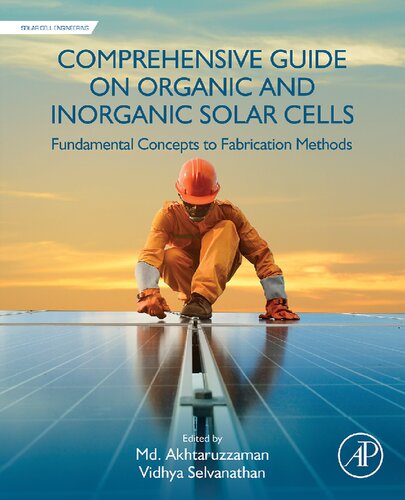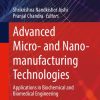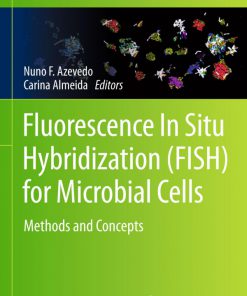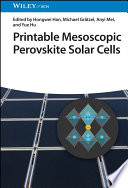Comprehensive Guide on Organic and Inorganic Solar Cells Fundamental Concepts to Fabrication Methods 1st Edition by Akhtaruzzaman, Vidhya Selvanathan 0323855296 9780323855297
$50.00 Original price was: $50.00.$25.00Current price is: $25.00.
Comprehensive Guide on Organic and Inorganic Solar Cells Fundamental Concepts to Fabrication Methods 1st Edition by Akhtaruzzaman, Vidhya Selvanathan – Ebook PDF Instant Download/Delivery: 0323855296, 9780323855297
Full download Comprehensive Guide on Organic and Inorganic Solar Cells Fundamental Concepts to Fabrication Methods 1st Edition after payment

Product details:
ISBN 10: 0323855296
ISBN 13: 9780323855297
Author: Md. Akhtaruzzaman, Vidhya Selvanathan
Comprehensive Guide on Organic and Inorganic Solar Cells: Fundamental Concepts to Fabrication Methods is a one-stop, authoritative resource on all types of inorganic, organic and hybrid solar cells, including their theoretical background and the practical knowledge required for fabrication. With chapters rigorously dedicated to a particular type of solar cell, each subchapter takes a detailed look at synthesis recipes, deposition techniques, materials properties and their influence on solar cell performance, including advanced characterization methods with materials selection and experimental techniques.
By addressing the evolution of solar cell technologies, second generation thin-film photovoltaics, organic solar cells, and finally, the latest hybrid organic-inorganic approaches, this book benefits students and researchers in solar cell technology to understand the similarities, differences, benefits and challenges of each device.
- Introduces the basic concepts of different photovoltaic cells to audiences from a wide variety of academic backgrounds
- Consists of working principles of a particular category of solar technology followed by dissection of every component within the architecture
- Crucial experimental procedures for the fabrication of solar cell devices are introduced, aiding picture practical application of the technology
Comprehensive Guide on Organic and Inorganic Solar Cells Fundamental Concepts to Fabrication Methods 1st Table of contents:
Chapter 1. Principle of photovoltaics
Abstract
1.1 Introduction
1.2 Solar energy
1.3 Photovoltaic effect
1.4 Fundamentals of solar cells
1.5 Energy conversion of solar cells
1.6 Equivalent circuit of solar cells
1.7 Collection efficiency
1.8 Theoretical limit of efficiency
1.9 Classification of solar cells
1.10 Efficiency measurement
1.11 Summary
Acknowledgments
References
Further reading
Chapter 2. Organic solar cells
Abstract
2.1 Introduction and working principles
2.2 Normal and inverted device structure configurations
2.3 Key factors behind organic photovoltaic cell efficiency
2.4 Ternary strategy of organic solar cells
2.5 Electron transparent layer
2.6 Hole transport layer
2.7 Electrode materials
2.8 Fabrication techniques
2.9 Key challenges
2.10 Recommendations for future research works
2.11 Conclusions
Acknowledgments
References
Chapter 3. Introduction of inorganic solar cells
Abstract
3.1 Cadmium-telluride thin film solar cells
3.2 Copper indium gallium diselenide thin film solar cells
3.3 Copper zinc tin sulfide thin film solar cells
3.4 Novel chalcogenides and emerging photovoltaic technologies
Subchapter 3.1. Cadmium telluride (CdTe) thin film solar cells
Abstract
3.1.1 Introduction
References
Subchapter 3.2. Copper indium gallium selenide solar cells
Abstract
3.2.1 Introduction to copper indium gallium selenide solar cells
3.2.2 Copper indium gallium selenide device fabrication
3.2.3 Conclusion
References
Subchapter 3.3. CZTS solar cells
Abstract
3.3.1 Introduction to CZTS thin film solar cells
3.3.2 CZTS device architecture and fabrication techniques
3.3.3 CZTS thin films by RF-sputtering from single quaternary compound targets
3.3.4 Performance of state-of-the-art CZTS thin film solar cells
3.3.5 Conclusion
References
Subchapter 3.4. Novel chalcogenides and their fabrication techniques
Abstract
3.4.1 Introduction
3.4.2 History of transition metal dichalcogenides
3.4.3 Crystal structures and physical properties
3.4.4 Optical properties
3.4.5 Fabrication of transition metal dichalcogenides
3.4.6 Applications of transition metal dichalcogenides materials
3.4.7 Conclusions
References
Chapter 4. Introduction to organic-inorganic hybrid solar cells
Abstract
References
Subchapter 4.1. Dye-sensitized solar cells
Abstract
4.1.1 Working principle
4.1.2 Photoanode
4.1.3 Dye
4.1.4 Counter electrode
4.1.5 Electrolyte
Acknowledgments
References
Subchapter 4.2. Quantum dot-sensitized solar cells
Abstract
4.2.1 Introduction
4.2.2 Device mechanism
4.2.3 Quantum dot-sensitized solar cells components and materials selection
4.2.4 Fabrication techniques
4.2.5 Challenges
4.2.6 Future prospect
References
Subchapter 4.3. Organometal halide perovskite photovoltaics
Abstract
4.3.1 Introduction
4.3.2 Summary and future outlook
Declaration of competing interests
Acknowledgments
References
Subchapter 4.4. Optics in high efficiency perovskite tandem solar cells
Abstract
4.4.1 Introduction
4.4.2 Fundamentals of tandem solar cells
4.4.3 Scientific challenges for monolithic 2-terminal tandem solar cells
4.4.4 Device structure, film growth, and interface morphology
4.4.5 Optics of perovskite/silicon tandem solar cells
4.4.6 Fabrication of perovskite/silicon tandem solar cells
4.4.7 Final remarks and prospects
Acknowledgments
References
Chapter 5. Commercial viability of different photovoltaic technologies
Abstract
5.1 Introduction
5.2 Photovoltaic performance
5.3 Stability and reliability
5.4 Failure and degradation modes
5.5 Scale-up possibilities towards lifetime and reliability
5.6 Conclusions
People also search for Comprehensive Guide on Organic and Inorganic Solar Cells Fundamental Concepts to Fabrication Methods 1st:
2 organic compounds
z configuration organic chemistry
comprehensive guide to nature’s sunshine products
organic and inorganic compounds worksheet answers
Tags:
Akhtaruzzaman,Vidhya Selvanathan,Comprehensive,Guide
You may also like…
Relationships & Lifestyle - Personal Growth & Inspiration
Technique - Energy: Renewable Energy
Biology and other natural sciences - Biology
Biology and other natural sciences - Biotechnology
Engineering - Energy & Power Resources











